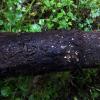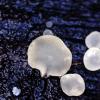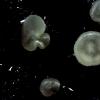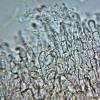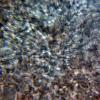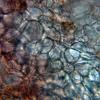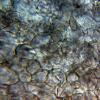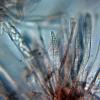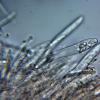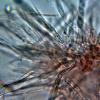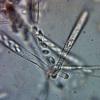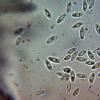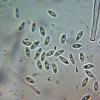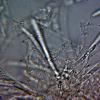
21-12-2025 09:32
Hello.A tiny ascomycete found embedded in wood in

22-12-2025 00:47
Patrice TANCHAUDBonsoir, récolte à proximité du milieu dunaire

21-12-2025 21:32
Pol DebaenstHello, Garden, Burgweg 19, Veurne, BelgiumOn 10/1

21-12-2025 21:40
Isabelle CharissouBonjour, j'aimerais connaitre les références de

21-12-2025 21:31
Pol DebaenstHello, Garden, Burgweg 19, Veurne, BelgiumOn 10/1

21-12-2025 21:31
Pol DebaenstHello, Garden, Burgweg 19, Veurne, BelgiumOn 10/1

20-12-2025 23:08
Patrice TANCHAUDBonsoir, récolte sur sol sablonneux dans l'arri�

20-12-2025 15:47
Mirek GrycHi.These grew on pine wood that was heavily covere
Pequeños apotecios fotografiados sobre un pequeño tronco de planifolio indeterminado, el pasado 12 de Julio en soto fluvial y a 1430 metros.
De color crema claro, con forma de disco, de entre 0,6 a 2,7 mm., unidos al sustrato por la parte central, sin un pié diferenciado.
Pelos marginales septados y terminando en formas redondeadas.
Excípulo medular de textura intricada.
Excípulo ectal con hifas hialinas entre globosas y angulares.
Hifas de la base pigmentadas de un color grisáceo.
Ascas octospóricas de entre 57.5 a 74.7 × 6.7 a 8.4 µm. sin reacción aparente ni al Melzer, tampoco al IKI y tampoco al Melzer + KOH, sin croziers observados.
Paráfisis con contenido granuloso.
Esporas entre cilíndricas y fusiformes, mayoritariamente con dos gotas de aceite en su interior, dispuestas en ambos polos, con unas medidas de:
(7.6) 8.5 - 9.8 (11.4) × (3.2) 3.4 - 3.8 (3.9) µm
Q = (2.2) 2.25 - 2.7 (3.2) ; N = 30
Me = 9 × 3.6 µm ; Qe = 2.5
Por el aspecto pensé en Orbilia, pero la microscopía la descarta, tampoco me parece una Mollisia, y lo mas parecido que he encontrado sería Calycina, pero sigo totalmente perdido.
Cualquier opinión por vuestra parte será bien recibida.
Muchas gracias de antemano.
Saludos cordiales.


there are some dark brown excipulum cells near the apothecium base - could it perhaps be a Mollisia?
Viktorie

Muchas gracias.
Saludos cordiales.

Josep, when it comes to the size of the spores, their small size is not unusual for this species, the more that you will probably agree with me that it is a collective species?
I wonder about the lack of reaction to iodine? In this species the reaction is very weak, is it possible that you might not notice it ?? I personally use Lugol.
If you have lugol then use it and check the paraphyses. Their content in Lugol turns intensely red and then it is clearly visible.
The variability of this species is surprising so I have problems with it too. I have included some of the collection on my atlas page. The dimensions of the spores are given there, so compare if you like.
http://www.grzyby-pk.pl/gat_h/gat_hymenoscyphus_imberbis.php
I've mentioned this before: I see this species more often with spores that are below normal dimensions.
However, I am not saying that it is this species! My only suggestion is that the small dimensions of the spores do not rule out this species, but that you have to check for yourself whether the rest of the features fit this species.
best regards
Mirek

De nuevo MUCHAS GRACIAS, por vuestra ayuda.
Saludos cordiales.
Acabo de encontrar en el trabajo de Baral, dentro de la carpeta de "imberbis aff. inamyloid", unas esporas con unas medidas idénticas a las del presente estudio, dejo el enlace y la imagen de las esporas.
https://drive.google.com/drive/folders/0B5SeyOEkxxZhOTdmalVNcW10YWc?tid=0B5SeyOEkxxZhYVZub0N1aGY5YTg
Saludos cordiales

